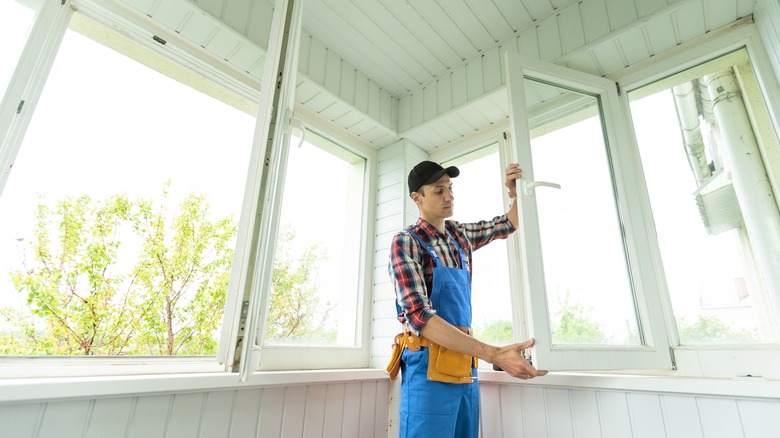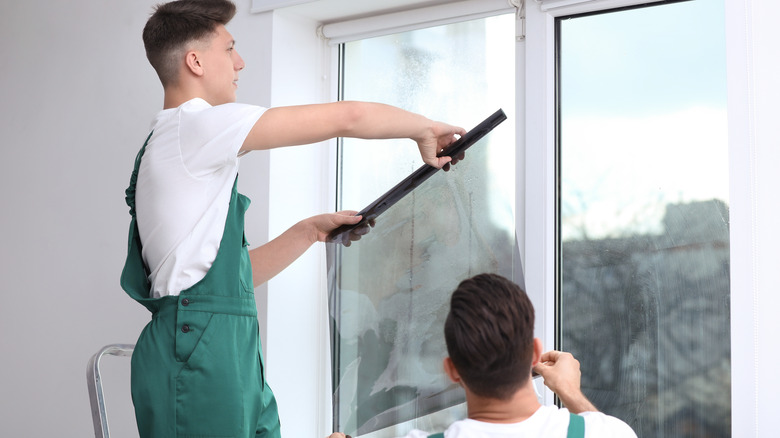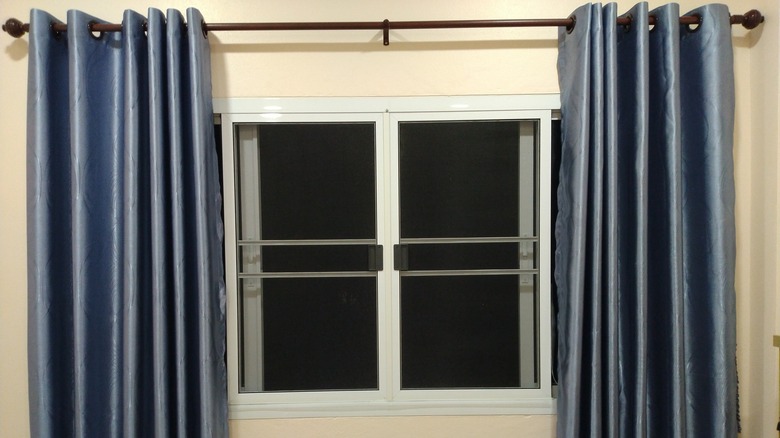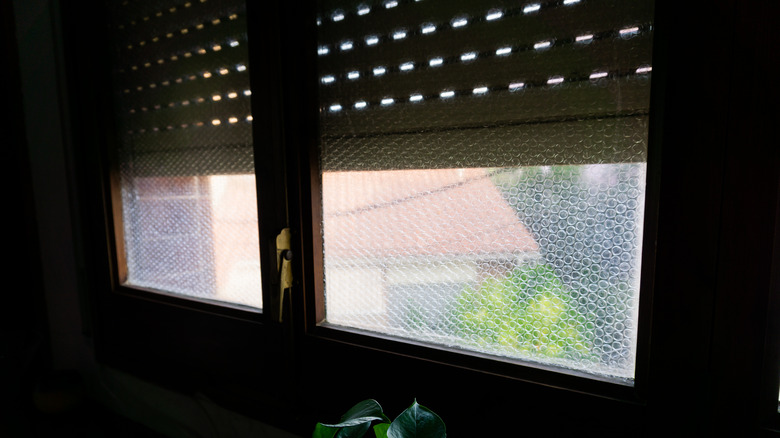5 Tips For Easily Insulating Your Windows This Winter
Preparing for cold temperatures is necessary if you want to stay warm and cozy indoors. There is nothing as annoying as cold drafts creeping into your house through the windows or doors. And, while staying warm and cozy is important, especially during winter, heat loss through the window will also amount to an increase in your monthly heating bills. According to the Department of Energy, heat loss through windows could cost you up to 30% of your energy bills.
The good news is that there are ways to combat the creeping cold and inflated energy bills. What's more, you don't have to break the bank to replace the windows in your house with expensive energy-efficient models. Window insulation is a quick and affordable way of keeping the cold outside without too much hassle. Since some of these solutions are also DIY friendly, you won't have to spend money on hiring professionals for the job — let's take a look at how you can quickly insulate your windows in preparation for this winter season.
Install window film
One of the easiest window insulation options available is the installation of a window film. Window films are quite effective, retaining up to 55% of the heat that would have otherwise escaped, notes Angi. Made of plastic, this transparent film creates a barrier between the home's interior and the window pane. They can be used to improve insulation to any type of window, including single and double pane options. They are easy to install, window films are also quite inexpensive compared to other options like replacing the entire window.
The beauty of installing window films is that they won't get in the way of your viewing experience because they are transparent. Window film usually comes in a kit that includes everything needed for installation. All you have to do is to measure the size of your windows and cut the film accordingly. Use the adhesive tape to stick it onto the window and use a blow drier to shrink the film into the window for a smooth finish. You do, however, need to make sure that there are no air pockets where air could escape, lest you lose the advantages of the film. The only downside with window films is that you can only use them once.
Caulk along the trim
Using caulk to insulate the window is another useful tip. It is an easy fix that you should consider especially if you have isolated the source of a draft. Caulking is particularly helpful in sealing the spaces between the exterior window perimeter or the space between the trim and the wall. If you have no plans to open the window during winter, you can also choose to seal the whole window perimeter with removable caulk. Alternatively, if you are going to use the window, consider weather-stripping the moving parts instead.
Before applying caulk to your windows, you should first remove any pre-existing and damaged caulk. It is not uncommon for latex caulk to crack after some time compromising the integrity of the seal. If you have never used caulk on your windows before, all you have to do is clean the specific areas you want to seal and remove ayr flaking paint. Be sure to caulk the window perimeter during a warm day preferably with low humidity, suggests Eikenhout. If you attempt to apply caulk during cold weather, you risk the caulk not drying properly or even trapping moisture in between the gaps.
Consider using thermal curtains
During winter, your house needs all the help it can get to keep the cold out. While window dressing has long been used for aesthetics, why not invest in thermal curtains that also double up as insulation fabrics? The beauty of thermal curtains is that they are multi-seasonal, you can use them during winter to keep the cold away and also during summer to prevent heat gain through the windows. Also, you don't need to compromise the aesthetics of your windows since the curtains come in different colors and styles for every home decor.
Essentially, thermal curtains work by trapping cold drafts or heat in between the thick multilayered fabric, notes Deconovo. According to the Department of Energy, thermal curtains can help reduce energy loss through the windows by as much as 25%. Now think about how much heat you can retain in your home if you combine all of the insulation methods previously mentioned. However, before picking just any curtain from the store, it is important to pay attention to the length and also the width. Thermal curtains should be long enough, preferably floor length, and also wide enough to cover and overlap the entire window width.
Bubble wrap your windows
Another simple yet effective method to insulate your windows this winter is to install bubble wraps to reduce heat loss. Similar to curtains, bubble wraps can also be used during summer to prevent heat gain. Essentially, bubble wraps work by increasing the window's heat resistance flow, mentions Fountain Hills Air Conditioning & Heating. The air trapped in the bubbles provides a low-budget alternative to double-glazed windows. Although this quick hack works magic, you should be aware that, while it allows natural light through, it will affect the visibility through the windows.
Another important feature of bubble wrap is how easy it is to install. There is no blow drying or taping during installation. All you need to do is to mist your window panes and the bubble side of your wrap with water, then carefully press the wrap on the window using your palm, ensuring it adheres all through. The wrap self-adheres and you can easily remove it whenever necessary. Different from window films, you can actually reuse your wraps next summer and even winter. This method is a quick fix that will provide you with temporary insulation.
Install cellular shades
Installing cellular shades will save money and prevent heat from slipping through the crevices of your windows. Cellular shades are also referred to as honeycomb shades thanks to their signature pleated honeycomb appearance. The honeycomb structure features air pockets that provide insulation between the window and the interior temperature. This type of window attachment only works when it is fully closed — but this gives you the opportunity to open your windows when the sun is out and take advantage of the warmth.
According to the Department of Energy cellular honeycomb shades are quite effective in providing insulation not only during winter but also in summer as well. In fact, if you use them correctly, they prevent heat loss by up to 40% which translates to about 10% savings on your energy bills. However, to get the full benefits of this window attachment, you need to invest in professional installation and a good quality product. In addition, you need to keep in mind that cellular shades will get in the way of your line of sight because they aren't transparent.





